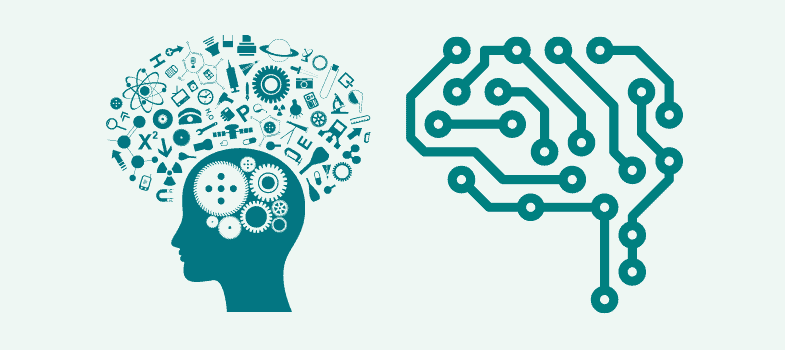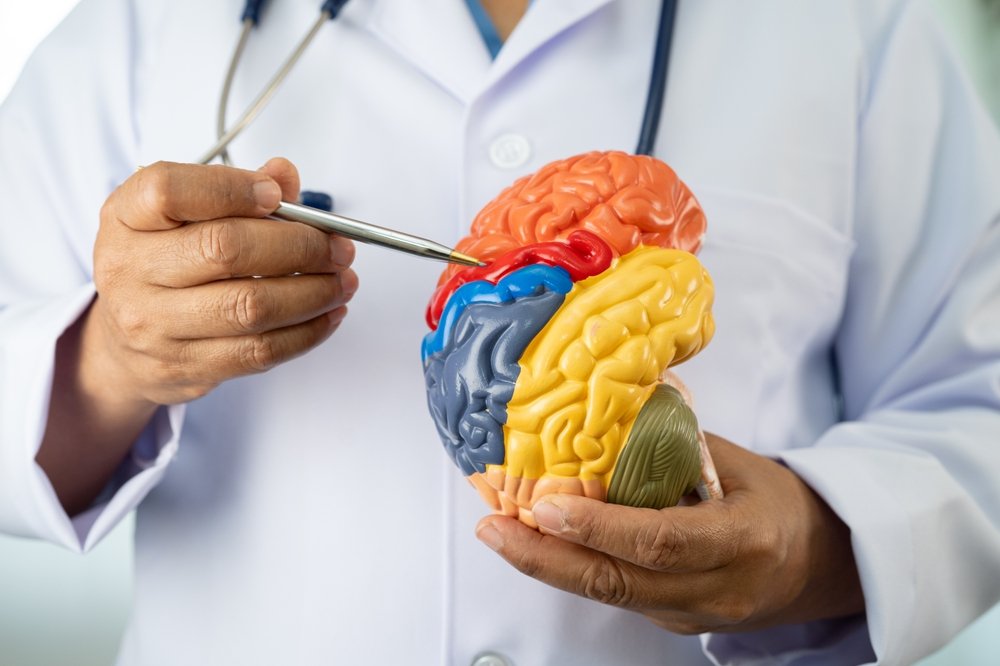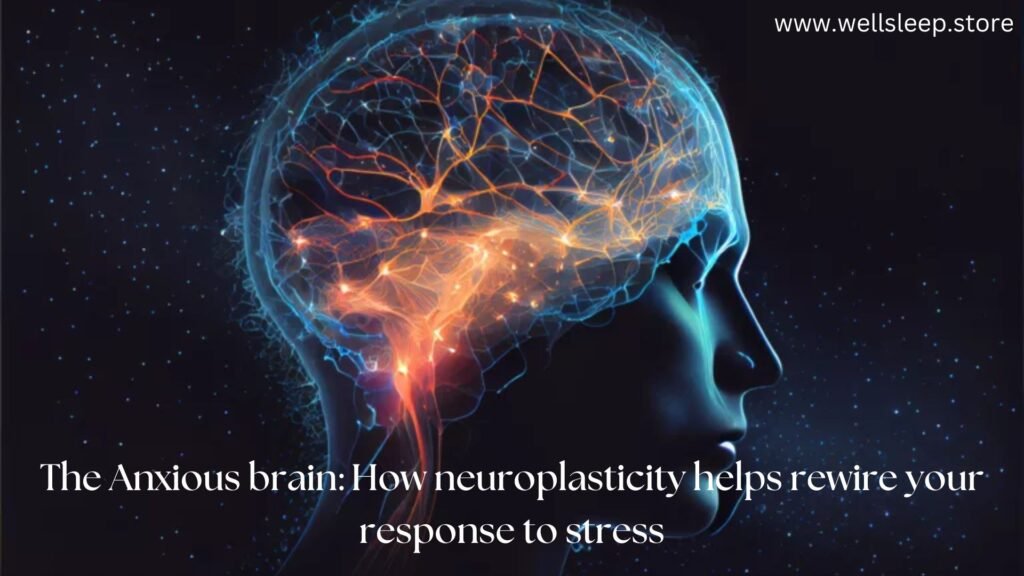The Anxious Brain: How Neuroplasticity Can Help You Rewire Your Response to Stress
The anxious brain: Anxiety is one of the most common mental health challenges of our time. Whether triggered by stress, traumatic events, or just the complexities of everyday life, anxiety can take a significant toll on our mental, emotional, and physical health. If you’ve ever found yourself overwhelmed by persistent worry, racing thoughts, or even a constant sense of unease, you’re not alone.
But what if we told you that your brain has the capacity to change and adapt to new patterns? And what if this capacity could help you reduce the intensity of your anxiety and stress responses? The key lies in a concept known as neuroplasticity, the brain’s remarkable ability to reorganize and rewire itself.
In this article, we’ll discover how neuroplasticity can help in reframing response to anxiety, create healthier patterns of thought, and take full control of the emotional well-being of individuals. We will provide you with concrete steps on how to harness neuroplasticity as a tool to effectively manage your anxiety.
What is Neuroplasticity?
Neuroplasticity, often simply referred to as “brain plasticity” or “neural plasticity,” is the ability of the brain to change throughout life. In other words, the brain continues to form new neural connections to adapt to its experiences, acquire new skills, and reshape itself according to the environment and mental states.
For decades, it was believed that the brain is set once we become an adult in terms of its structure and function. However, for the last few decades, studies have shown that our brains are more flexible and dynamic than what has previously been considered. The brain is always rearranging its pathways, given that we take efforts to engage in behaviors or exercises that encourage change.

The Link Between Anxiety and the Brain: Know more about the anxious brain
Before discussing how neuroplasticity can help us rewire our anxious responses, let’s understand what happens in the brain when we experience anxiety.
In situations that might cause stress and anxiety, the amygdala, a center in the brain that is associated with emotion, is triggered. The signals that are received from the amygdala travel throughout the body and brain and get ready to react to danger, resulting in a response of increased cortisol levels and other stress hormones. This causes the body to respond rapidly to dangers, but for anxiety disorders, these responses occur even in situations where no immediate danger is perceived.
Over time, chronic anxiety leads to overreactivity towards stressors and sustained activation of the amygdala. Due to this fact, people who are anxious frequently find themselves locked into a pattern where the brain continues to identify routine situations as threats, though they are inherently not dangerous.
This is where neuroplasticity comes in. Through conscious efforts and mental exercises, we can rewire the brain’s neural pathways to help reduce the intensity of anxiety and change the way we respond to stress.
Anxious brain: How Neuroplasticity Can Help Rewire Your Response to Stress
Neuroplasticity is a powerful tool for reshaping the brain’s response to anxiety. By intentionally changing the way we think, behave, and interact with stress, we can create new neural connections that help us manage anxiety more effectively. Here’s how neuroplasticity works to help reduce the brain’s tendency toward stress and anxiety:
1. Building New Neural Pathways
The more we practice certain behaviors or thought patterns, the more likely they are to become established in our brain’s neural pathways. When you regularly engage in calming or stress-reducing activities, such as mindfulness meditation, deep breathing, or positive self-talk, new neural pathways form in the brain. They then inhibit the habitual, anxiety-driven pathways that may have been reinforced throughout years.
For example, practicing mindfulness regularly helps train your brain to respond with greater calm and clarity to the presence of stressors rather than panic or distress. In essence, you strengthen the brain’s ability to regulate its response to stress.
2. Reducing Amygdala Reactivity
With chronic anxiety, the amygdala begins to overreact to perceived danger and thus makes the brain overly sensitive to the presence of threats. Such may stimulate an exaggerated reaction to manageable stressors that do not really exist. Techniques like mindfulness meditation or cognitive-behavioral therapy can calm the brain and the body, thus helping to reduce the reactivity of the amygdala.
Neuroplasticity enables the amygdala to be “conditioned” less to react drastically to stressful triggers. With more time, a new coping mechanism changes your emotional behavior, and through this, its activity decreases leading to a greater balance in an emotional state.
3. The Potential of the Prefrontal Cortex: Emotional Regulation
It includes higher cognitive functions, such as decision-making and emotional regulation or impulse control. During anxiety episodes, the activity in the prefrontal cortex decreases, but that of the amygdala increases, playing the central role in emotional reactions. However, thanks to neuroplasticity, it’s feasible to strengthen the prefrontal cortex and boost its role in the regulation of emotions.
Cognitively, practices like mindfulness and CBT stimulate the PFC, encouraging more balanced reactions to stressors. You become able to make better decisions under pressure when the control over your emotional responses has been improved.
4. Modification of Thinking Pattern with Cognitive Restructuring
Cognitive restructuring is the core component of CBT, which involves challenging negative or irrational thoughts and replacing them with more realistic, balanced perspectives. Through repeated practice, you can create new neural pathways that support healthier thought patterns. These new pathways, over time, can help break the cycle of anxiety by enabling you to see situations more clearly and respond with greater emotional stability.
For instance, if you keep thinking, “I am going to fail this presentation and embarrass myself,” cognitive restructuring would prompt you to question that thought and replace it with something more positive and rational, such as, “I am prepared for this presentation, and I can handle it.”
5. Building a Positive Feedback Loop
Neuroplasticity doesn’t just help us eliminate negative responses—it can also promote positive changes in the brain. When we engage in positive activities, such as practicing gratitude, self-compassion, or engaging in enjoyable hobbies, the brain releases “feel-good” neurotransmitters like dopamine and serotonin. These chemicals help reinforce the positive behaviors and emotions, creating a positive feedback loop that encourages more healthy practices.
Through positive reinforcement, the same pattern is, over time, rewired towards constructive thought processes and experiences in preference to brooding about worried or negative tendencies.
Actionable Measures to Reorient Your Anxious brain
If you have made up your mind to leverage neuroplasticity towards the alleviation of anxiety issues, the following are actionable steps you can employ to get started to reorient your brain:
a. Practice Mindfulness Meditation: Set aside time each day to practice mindfulness, focusing on your breath and staying present in the moment. This helps build awareness and calm your nervous system.
b. Engage in Cognitive Behavioral Therapy (CBT): Work with a trained therapist to identify negative thought patterns and replace them with healthier, more balanced perspectives.
c. Use Visualization Techniques: You can practice seeing soothing scenarios in your mind, or imagine handling stressful situations in a very cool manner. These activities can initiate the relaxation response of the brain.
d. Exercise Often: Exercise tends to increase neurochemicals associated with healthy brains, as well as reducing anxiety. Aim for activities you enjoy, like walking, yoga, or dancing.
e. Practice Gratitude: Adopt the habit of recording things you are thankful for. You help shift your brain away from stressful patterns by focusing on good things, rather than negative stressors.
f. Challenge Negative Thoughts: Anytime you recognize your thought pattern going in a fearful direction, work at changing the thinking with a more logical or optimistic mindset.

Conclusion
Anxiety can be overwhelming at times, but with the power of neuroplasticity, you can take control of your brain’s responses to stress. Consistent practice of techniques that promote relaxation, cognitive restructuring, and emotional regulation can rewire your brain to reduce anxiety and build resilience against life’s challenges.
Remember, neuroplasticity is a lifelong process. The more effort you make in changing thought patterns and behaviors, the more you will develop new neural pathways that may bring you into a calmer and more balanced life. With patience and persistence, you can use your brain power to create a sustainable change from this cycle of anxiety.

